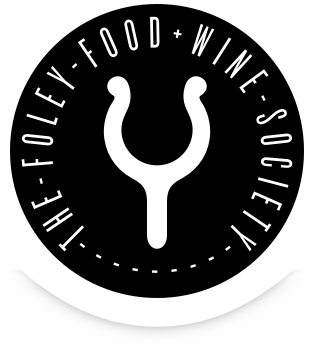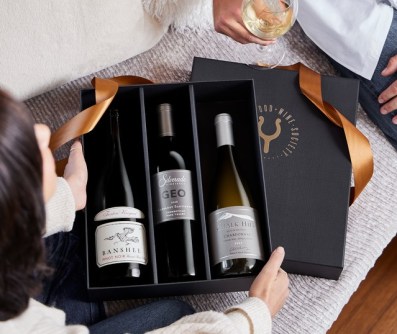[Editor’s Note: It’s been a busy week in world news. If you’re reading this days, weeks, or months after the publish date, plug “March 2020” and “COVID-19” into Google, and you’ll see what was happening. So, for those of you seeing this today, we gather you might be hold-up at home, so why not use the time to brush up on your wine terminology?]
Many of us find that decoding the wine words that professionals use on a day-to-day basis can be quite challenging. Unfamiliar terms can almost sound intimidating, so to help you on your path to becoming more wine savvy, we’ve translated 10 common wine words below. The next time you see these fairly common terms, rather than guessing at what they mean, you’ll be the expert.
BLEND: This is a wine that is comprised of more than one grape variety. If you’ve ever seen the letters ‘GSM’ on a wine bottle or have heard wine enthusiasts talk about GSM wines, they’re referring to a blend made from Grenache, Syrah, and Mourvèdre grapes. Even Syrah can be a blend. In California, wines are allowed to be labeled as one variety if at least 75% of the variety is present in the bottle.
CUVÉE: Here is a common wine word with two meanings. In Champagne production, cuvée refers to the first and best-pressed juice from the grapes. However, when you see “cuvée” on a wine label, it generally denotes a blend or a batch of wine. Some winemakers will choose to use this term when naming their wine instead of calling it a blend. We tend to see this with Champagne and American sparkling wine. Look for the word “cuvée” on the bottle to see if the wine is made from more than one grape variety. Typically, you can count on sparkling wines to be made from Chardonnay, Pinot Noir, and/or Pinot Meunier; although, that’s not always the case. You may also come across “Tête de cuvée” on a label, which is how Champagne producers commonly refer to their top bottling.
COMPLEX: A complex wine is one that displays many flavors and aromas. They are multidimensional and can exhibit different layers with every sniff and sip. Take the 2016 Lancaster Cabernet Sauvignon, for example. The famous critic Robert Parker of The Wine Advocate once described the Lancaster Cabernet as having “a medium to deep ruby color and nose of cassis, blackcurrant bud, baker’s chocolate, cedar, Morello cherries and pencil lead. Medium to full-bodied, it has a good core of minerally fruit with firm, chewy tannins, good freshness and a long, earthy finish.” That’s pretty complex! Each aroma and flavor (whether you pick up on the same ones or different notes) won’t emerge all at once—but they’ll show up with each swirl, sniff, and sip.
FERMENTATION: We’ve talked about malolactic fermentation here [link here], but what about the initial process of fermentation that completely transforms pressed grape juice into the alcohol beverage we know and love so much? Simply put, fermentation is the process of turning sugar into alcohol with yeast. An important equation to keep in mind is:
Sugar + Yeast = Alcohol + CO2
FINISH: When we talk about a wine’s finish, we’re describing the aftertaste or impression a wine leaves in your mouth after you have swallowed it. If you’re tasting in a class setting or tasting wine and spitting as a lot of professionals do, you’ll still be able to distinguish the finish of the wine. The finish can be short or it can be long and lingering. What we mean by long and lingering is that sometimes the flavors of a wine will linger for a while in your mouth before you feel like you need another sip. A high-quality wine will have a long, lingering finish.
MERITAGE: Meritage is a word you’ll only see on Californian wines. It’s a California wine blend of Bordeaux varieties. With that being said, a red Meritage might include a blend of Merlot, Cabernet Sauvignon, and Cabernet Franc. A white Meritage could be a blend of Sauvignon Blanc and Sémillon. The 2016 Foley Johnson Estate Meritageis a blend of 42% Merlot, 40% Cabernet Sauvignon, 13% Petit Verdot, and 5% Cabernet Franc and crafted to express the property’s Bordeaux-style.
MOUTHFEEL: This word is used to describe the sensations felt on the palate. Some of the most common words to depict mouthfeel are: smooth, velvety, rough, heavy, dense, delicate, silky, chewy, warming, viscous—and the list could go on. For this example, let’s take a deeper look into “velvety tannins.” Tannins create a drying sensation on your tongue and in your cheeks. But not all tannins are the same. Tannins can be silky, velvety, lush, supple, etc, so when we say “velvety tannins,” think of a velvet glove, or try to imagine what it would be like to lick the curtains at the palace of Versailles before the guards kick you out. They’re going to be rich and luxurious and they demonstrate what velvety tannins might feel like on your tongue.
SEDIMENT: Sediment is the small particles or color pigments that settle out of wine as it ages. If you see sediment at the bottom of your glass, it isn’t anything to worry about—it could be an indicator that the wine was unfined or unfiltered, which translates to more complexity and depth or your wine has just aged gracefully.
TARTRATES: Tartrates are also known as wine diamonds. They usually appear on the cork or at the bottom of a bottle during aging. Wine diamonds are harmless and are a natural result of the tartaric acid in grapes binding together with potassium found in wine. Tartrates are pretty neat to look at, but nothing to worry about, as in, the wine is just fine!
TERROIR: Depending on the winemaker you ask, they’ll probably have a different definition on what terroir is. Terroir is a term coined by the French that loosely translates to “sense of place.” To us, it refers to the environmental factors: climate, topography, soil; that give a wine its unique characteristics.




